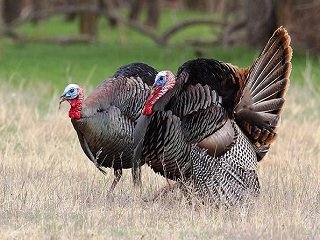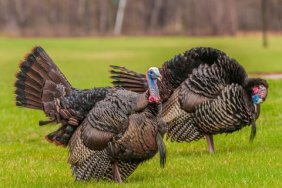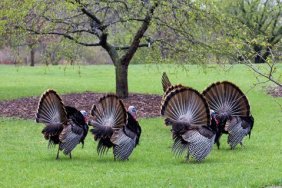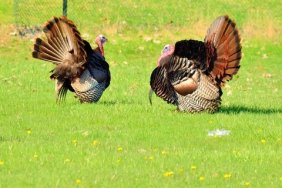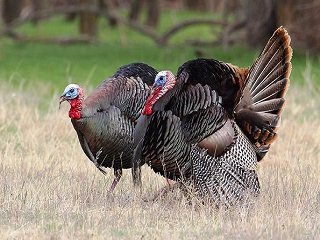 Turkey hunting can be a labor of love. For many, the labor part involves having to sit for long periods of time while calling turkeys or waiting for them to come to your calls inside of gun or bow range. In today’s high tech, high speed society, it is getting harder and harder for hunters to be patient, but if you are after an old trophy long bearded gobbler, patience can be overrated. During my many years of guiding turkey hunters, I have learned a few tricks and techniques that will help you bag that rarest of turkeys, the old mature gobbler.
Turkey hunting can be a labor of love. For many, the labor part involves having to sit for long periods of time while calling turkeys or waiting for them to come to your calls inside of gun or bow range. In today’s high tech, high speed society, it is getting harder and harder for hunters to be patient, but if you are after an old trophy long bearded gobbler, patience can be overrated. During my many years of guiding turkey hunters, I have learned a few tricks and techniques that will help you bag that rarest of turkeys, the old mature gobbler.
If you know exactly where a strutting zone is that belongs to a mature gobbler (an old turkey who is charged with breeding his flock’s hens), then you are ahead of curve on trophy hunting gobblers. However, a lot of hunters don’t have the opportunity to pre-locate and pattern trophy birds. If this applies to you, then you are going to have to locate a bird before hunting him. Do not fret.
Assuming you have multiple locations to hunt, you are going to have to run and gun to find your target. This is actually an easy task as long as you don’t start too early in the morning. Turkeys are creatures of habit and although they may not use the exact same locations every day for various activities, the flock in general will do the same thing every day of breeding season.
First they will gather in trees at night to roost. Mature gobblers do not roost with the hens and younger birds, but they will roost nearby to keep tabs on the group. This is important because this means they will all gather in the same location when they fly down in the early light of morning. Depending on weather, they can stay together for a couple of hours before mature gobblers head off to their strutting zones while hens head off to nest, and the younger birds head off to feed. You do not want to bump or alert those birds during the morning gathering, and even if you see gobblers, you still don’t know where their zones are so don’t bother trying to find them with all those eyes around waiting to spot you.
I often sleep in when chasing giant gobblers on private property because the odds of killing one at first light are slim. Sometimes hunters get lucky and set up on the travel routes of toms heading to their strutting zones, or some gobbler will be an outcast and come to a call, but generally the older birds need a few hours in the morning to get set up in their zones.
I like to cover a lot of ground and make a loud series of yelps on a wooden box call. Most old birds will answer and you will know one when you hear it. They answer because it is their job to direct hens to their zones so they can breed them. It is one of the only situations where mature gobblers give themselves away on purpose, just like a rutting bull elk does with his screaming bugles. The key to success is to ignore jakes and two year old birds that are wandering around, and concentrate only on those old bird calls.
